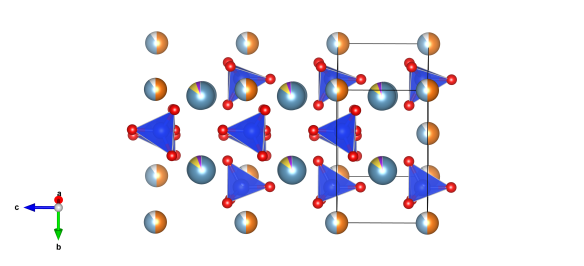What are comets made out of? One potential ingredient: Melilite
What does it look like?

The crystal structure of melilite. Image generated by the VESTA (Visualisation for Electronic and STructural analysis) software http://jp-minerals.org/vesta/en/. Blue and red silicate units are interspersed with atoms of magnesium, calcium, potassium, aluminium and sodium.
What is it?
One of the objectives of the Rosetta space mission, which has had us all enthralled over the last week, is to work out what comet 67 P is made out of. The idea is that, armed with this information, we can then work out where in space the comet actually came from – giving us clues as to the origin of the solar system. To do this Rosetta carried a number of instruments, all of which were tested with minerals that could be making up the comet before it launched.
Along with primary minerals, such as Fosterite, and alteration minerals such as Talc, one mineral that was tested on Rosetta’s instruments was Melilite. Melilite is actually a family of minerals, like feldspar, and can have a range of chemical compositions. It's characterised by isolated silicate units, with many other elements (on Earth these are usually calcium, potassium, sodium, aluminium and magnesium). In fact it is the magnesium in melilite which is very important – as isotopes of this element found in meteorites can be used to date processes back to the earliest point in our solar system.
Where did the structure come from?
The structure of melilite we've pictured comes from work by Smith in 1953, and the structure parameters can be found in the American Mineralogist Crystal Structure Database.






